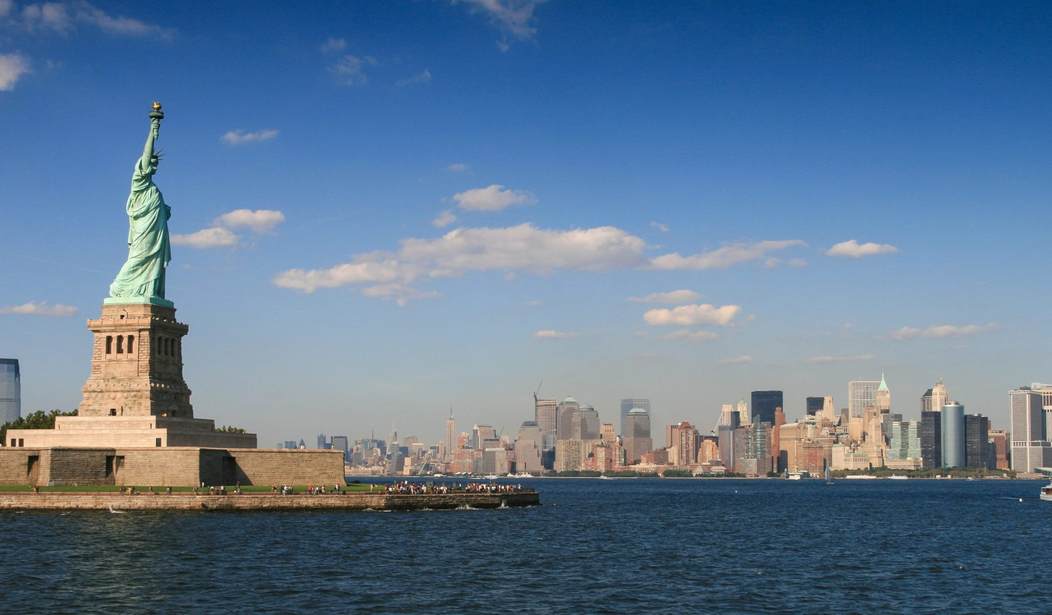Jim Acosta of CNN delivered a ten-minute speech in the White House Briefing Room yesterday, theoretically asking Trump policy wonk Steven Miller about the new immigration bill. Shortly after that, it became a Thing on Twitter to point out that Miller’s own great-grandparents entered through Ellis Island in 1903, the same year that the Emma Lazarus poem was added to the Liberty Island memorial.
Stephen Miller's great grandparents Wolf & Bessie Glotzer came to Ellis Island the same year Lazarus’ poem was added https://t.co/MGy5jAscDB
— (((Adenovir Unleashed))) (@Adenovir) August 3, 2017
Now, I believe my grandmother who, along with her mother and siblings, entered the country in 1904, to join my great-grandfather who had been here since about 1900. And I remember my family telling me stories about how frightening Ellis Island was because you didn’t know if you were really going to be admitted, or sent back after you’d spent everything you had to get here. So I got curious about what the entry requirements were at that time. The GG Archives provided some interesting material.
Section 12 of the act of 1903 provides that the manifests shall state, in answer to the questions at the top of the manifest sheet:
- The full name, age, and sex ;
- whether married or single;
- the calling or occupation;
- whether able to read or write;
- the nationality;
- the race;
- the last residence;
- the seaport of landing in the United States;
- the final destination, if any, beyond the port of landing;
- whether having a ticket through to such final destination;
- whether the alien has paid his own passage, or whether it has been paid by any other person or by any corporation, society, municipality, or government, and if so, by whom;
- whether in possession of thirty dollars, and if less, how much;
- whether going to join a relative or friend and if so, what relative or friend, and his name and complete address;
- whether ever before in the United States, and if so, when and where;
- whether ever in prison or almshouse or an institution or hospital for the care and treatment of the insane or supported by charity;
- whether a polygamist;
- whether an anarchist;
- whether coming by reason of any offer, solicitation, promise or agreement, expressed or implied, to perform labor in the United States, and
- what is the alien’s condition of health, mental and physical, and whether deformed or crippled, and if so, for how long and from what cause.
It also provided an example table of rejections for one month, October 1903:
Disposition of Immigrants Certified at Ellis Island, New York
Month of October, 1903
Reconciliation of Cases Class I (Dangerous Contagious)
Class II (Insanity and Idiocy)
Class III (Loathsome)
Class IV (Likely to Become A Public Charge)
Cases pending beginning of month 10 0 0 30 Cases certified during month 83 1 1 393 Total to be accounted for 93 1 1 423 Cases deported 61 1 1 30 Cases landed 4 0 0 349 Cases pending close of month 28 0 0 44
Notice Class IV, “Likely to Become a Public Charge.” In other words, would they be able to support themselves in this country?
There were some other restrictions as well, The Chinese Exclusion Act of 1882 (extended in 1892 and made permanent under the Geary Act in 11902) basically forbade any immigration by Asians and Arabs; later, the Immigration Act of 1924 extended the ban to Southern and Eastern Europe as well.
So, when the Emma Lazarus poem Acosta so admires exhorted:
“Give me your tired, your poor,Your huddled masses yearning to breathe free,The wretched refuse of your teeming shore.Send these, the homeless, tempest-tost to me,I lift my lamp beside the golden door!”










Join the conversation as a VIP Member